You might have noticed something about Melbourne’s railway station footbridges – they are bloody high, with long ramps and stairs leading up to them. So why do they need to be so high above the tracks?
In the beginning
Melbourne’s first trains were short and steam powered, so there bridges didn’t need to be high above the track.
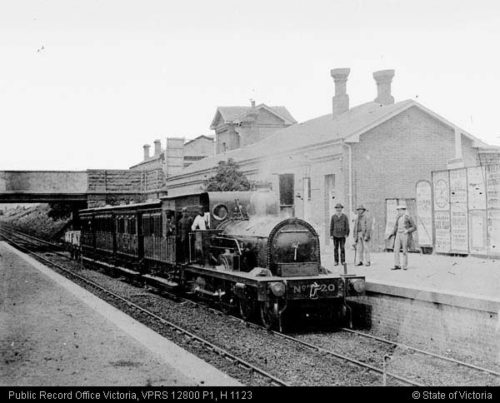
PROV image VPRS 12800/P1, item H 1123
But the introduction of electric trains from 1919 saw a need for increased clearances, to accommodate the overhead wires.
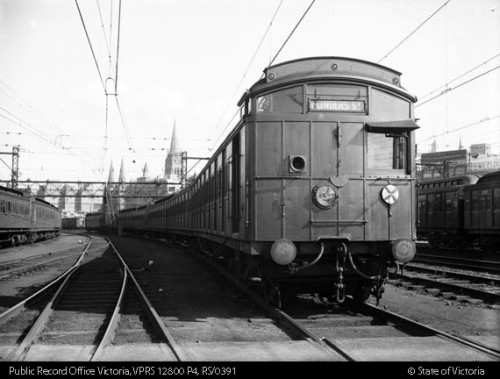
PROV image VPRS 12800/P4, item RS 0391
The 1953 Victorian Railways General Appendix gave the contact wire height as follows:
- Average height above rail: 16 feet – 16 feet 6 inches (4.48 m – 5.03 m)
- Minimum height under bridges (suburban area): 14 feet 6 inches (4.42 m)
- Minimum height under bridges (country area): 15 feet (4.57 m)
- Minimum height over sidings: 17 feet (5.18 m)
- Minimum height over level crossings: 18 feet (5.49 m)
- Maximum height: 19 feet (5.79 m)
Many footbridges already crossed the tracks prior to electrification, such this one in Moonee Ponds – constructed in 1890.
Ripponlea station – opened in 1912.
And Footscray station – rebuilt in 1901.
But these tight clearances remained for projects completed post electrification, such as Hawksburn station – rebuilt in 1914.
Camberwell – rebuilt in 1919.
And Middle Footscray – grade separated in 1928.
And later years
By the 1970s the clearance between trains and overhead bridges started to grow, with Yarraman station being one example – opened in 1976.
But it appears that exceptions were still permitted, such as West Footscray – rebuilt in the same year, 1976.
Enter double deck trains
In 1992 Melbourne introduced a trial double deck train – the 4D.
As you might expect, a whole lot of infrastructure changes were required to accommodate a taller train – including the Swanston Street bridge at Flinders Street Station, and numerous overhead bridges along the Belgrave and Lilydale lines. The exception was the City Loop tunnels – designed with double-deck trains in mind, no modifications were necessary.
But still the 4D train was shorter than the double deck trains of Sydney – 4270 mm tall, compared to the 4380 mm tall Sydney Tangara train it was based upon.
It also also interesting to compare the height of the double 4D train, to Melbourne’s single deck train fleet:
WTT Network Configuration-Metro Rolling Stock (L1-CHE-MAN-016)
- Hitachi: 3759 mm
- Comeng: 3835 mm
- Siemens: 4141 mm
- X’Trapolis: 4214 mm
Turns out bolting air conditioning units to the roof of a train really eats up that vertical clearance!
Current standards
Metro Trains Melbourne standard L1-CHE-STD-011 “Overhead Line Electrification” gives the overhead wire heights as follows:
- Open route (nominal at support): 5.20 m
- Open route – slab track (absolute minimum): 4.46 m
- Open route – ballast & sleepers (absolute minimum): 4.61 m
- Open route (absolute maximum, excluding lead up to level crossings) 5.85 m
- Station platforms (nominal)5.20 m
- Station platforms (minimum): 4.94 m
- Level crossings (minimum): 5.64 m
- Level crossings (maximum): 6.10 m
- Pedestrian crossings (minimum): 5.00 m
Compared with the overhead wiring standards from 1953, only an extra 190 mm clearance is required under bridges – that’s less than one step! So why are such massive bridges being built?
Turns out standard L1-CHE-STD-025 “Transit Space Clearances” has the answer:
Section 9.2 shall apply to any new, or alterations to existing Infrastructure constructed or installed by MTM, or on behalf of MTM or PTV.
The minimum Vertical Clearance shall be 5.75m for new bridges or structures above the track. The Vertical Clearance may be reduced subject to the approval of the Chief Engineer, or delegate, following adequate demonstration of requirements in Appendix A – Reduced Vertical Clearance to Structures Requirements.
This explains the massive footbridges built in the past decades at rebuilt railway stations – such as Watergardens.
And Westall.
As well as the depth of rail underpasses such as Nunawading.
Gardiner.
And St Albans.
But why are some stations even taller?
If the climb out of the above stations seems bad enough, there are stations such as Sunshine where the ascent is even more formidable.
Metro Trains standard L1-CHE-STD-025 “Transit Space Clearances” alludes to the reason:
On tracks operated or maintained by Accredited Rail Transport Operators (ARTOs) or Rail Infrastructure Managers (RIMs) other than MTM, consideration shall be given to their minimum vertical clearances, particularly on Double Stacked freight corridors.
A double stacked freight train is far taller than any Melbourne train.
With the only Australian examples running through the ‘outback’ – between Adelaide, Perth, Darwin and Parkes.
But the capability to run double stack freight trains in Victoria is on the roadmap for the Australian Rail Track Corporation, operator of the interstate freight network in Victoria.
Tottenham to Albury (T2A) is one of 13 projects that complete Inland Rail. This section of Inland Rail is planned along 305km of existing rail corridor from metropolitan Melbourne to the Victoria-NSW border at Albury-Wodonga. This project will see enhancements of existing structures to provide increased clearances along the rail corridor. The enhancement works are required to accommodate double stack freight trains of 1,800 metres in length to be run on the track.
With their clearance requirements detailed in Section 7 “Clearances” of their Code of Practice:
New Structures on the Defined Interstate Rail Network (DIRN) and the Inland Railway Route
Unless otherwise formally approved by appropriate ARTC Executive General Manager, all new structures over mainlines and passing loops/sidings shall be constructed to give full plate “F” – i.e. this will give 7.1m clearance above rail.
In Melbourne the Defined Interstate Rail Network runs west and north-east from the Port of Melbourne, paralleling the following suburban tracks.
- Sunbury line, Footcray to Albion
- Werribee line, Newport to Werribee
- Craigieburn line, Jacana to Craigieburn
Which explains the massive footbridges found at West Footscray.
Laverton.
And Coolaroo.
As well as the Sunshine example from earlier.
Footnote – how long are the ramps?
I found this in a report by Opus Consulting regarding development concepts for Donnybrook station:
There is a preference for the provision of a footbridge for access across the tracks for the following reasons:
» The nature of the basalt ground conditions, along with anecdotal information regarding ground water and inundation conditions, suggests the use of a footbridge rather than a subway.
» Construction interfaces with the live train running lines make it more favourable to build a footbridge
» Footbridges are also preferred over subways because they provide a more favourable security environment
» It is expected that a footbridge will be more cost effective to provide
And the kicker:
Clearance requirements over the standard gauge interstate track is 7.1m which dictates:
» 128.8m of ramp length to ground level
» 15.9m of stair length to ground levelClearance requirements over the broad gauge regional tracks is 5.75m which dictates:
» 97.2m of ramp length to ground level
» 13.2m of stair length to ground level
That 1.35 m of extra vertical clearance really makes a difference to the length of a DDA compliant ramp!
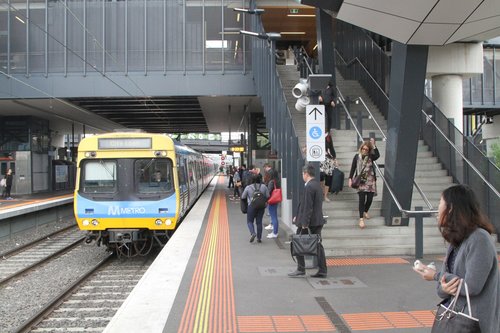
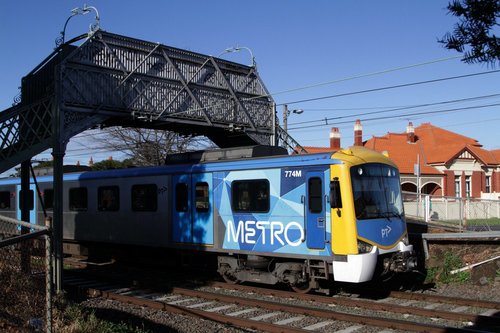
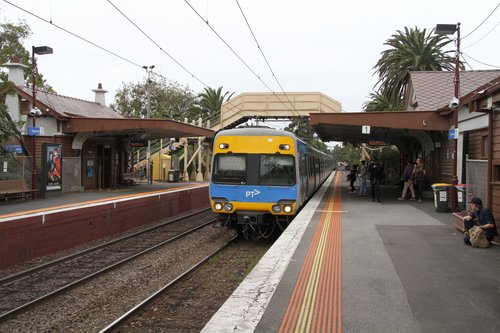
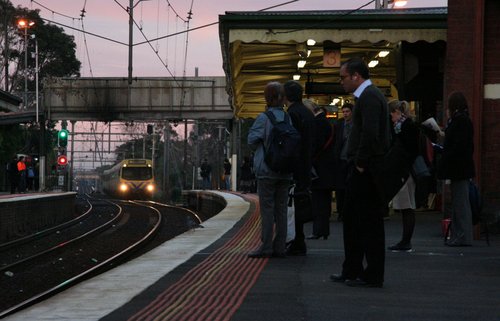
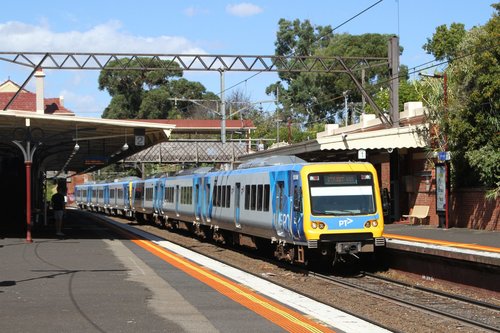
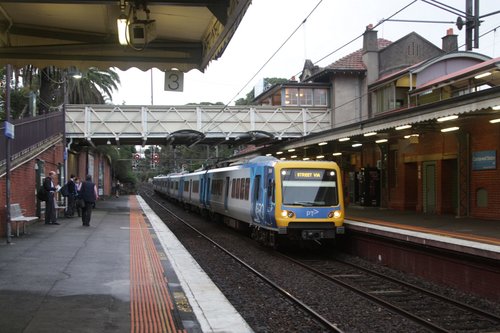
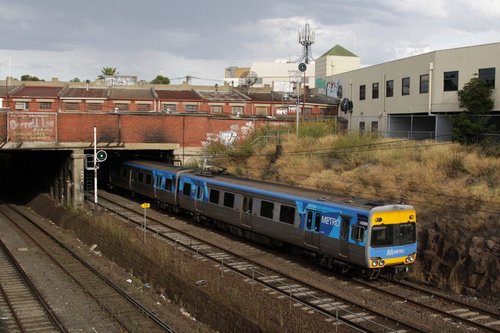
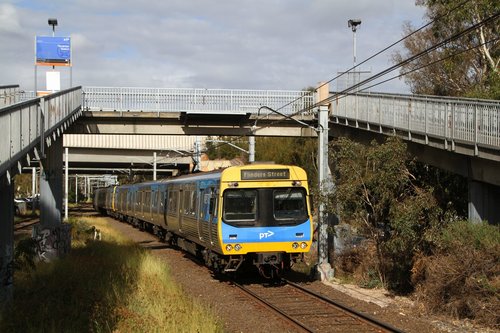
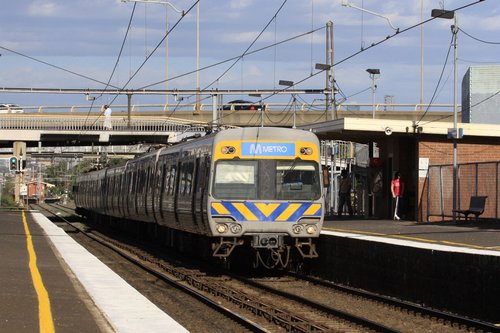
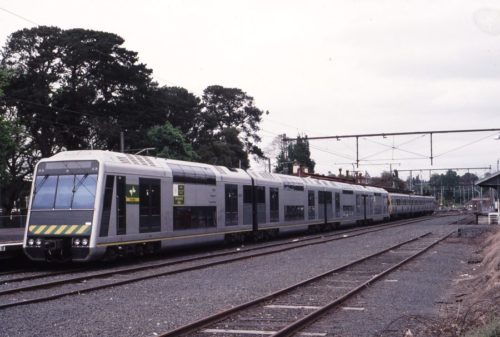
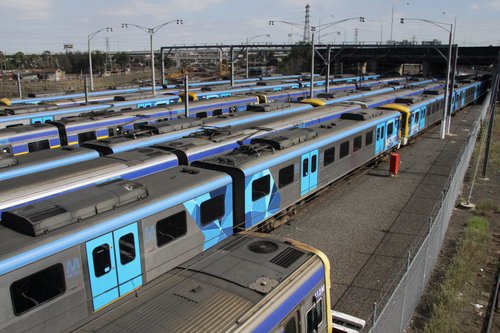
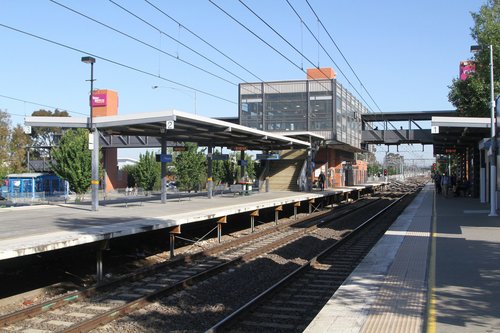
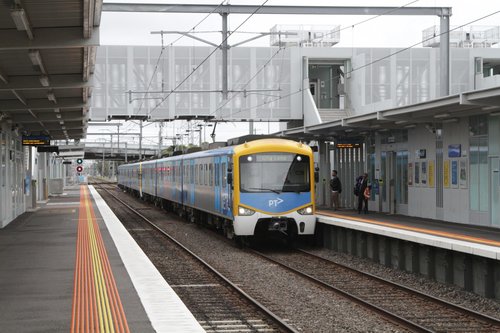
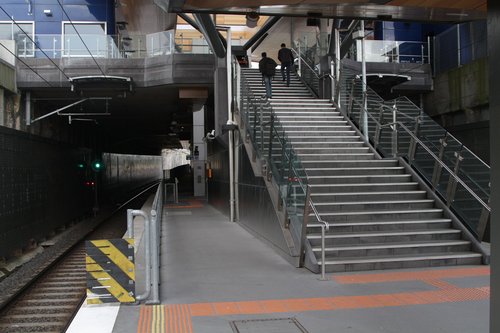
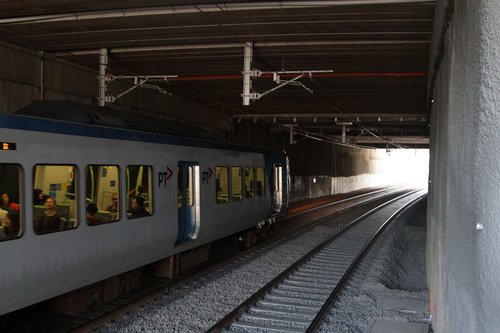
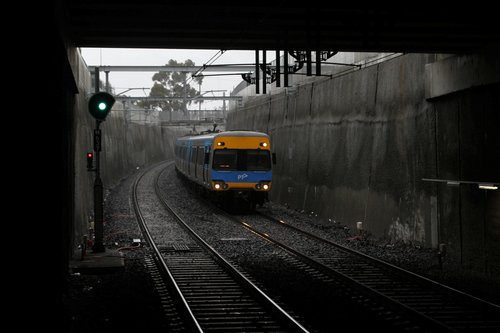
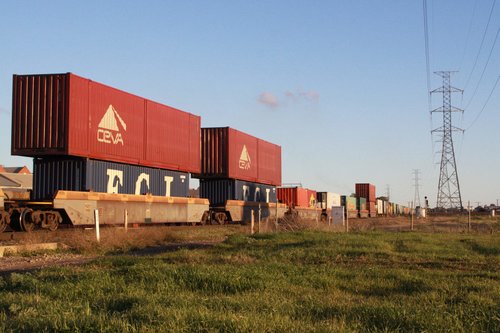
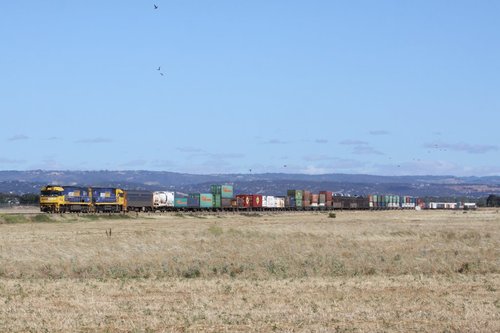
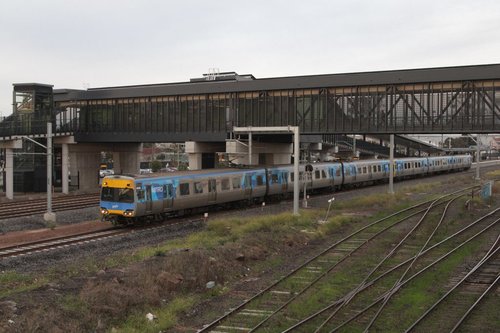
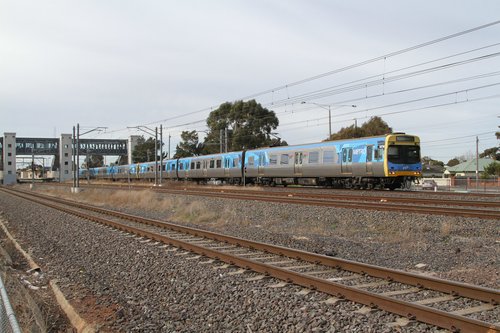
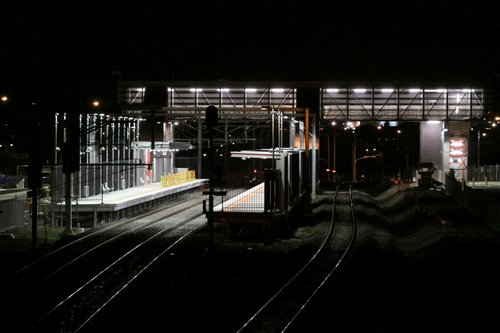
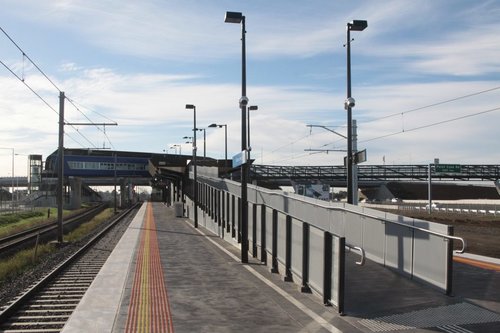

That is very interesting and informative. Thanks, Marcus!
I especially note, with my reading of it so far, the Donnybrook Station Development Concepts did not consider the possibility of elevating or trenching or tunnelling of the railway tracks in the future-urbanised area, but instead immediately assumed changing the level of road and pedestrian paths-
“This will trigger the need for substantial changes to the station in order for it to fulfil a far more prominent role on the metropolitan rail network. These changes include: …
Pedestrian access from one side of the corridor to the other ***via either a footbridge or subway***, noting that any above track structure will need to provide for 7.1m clearances to facilitate double stacking of containers on the standard gauge track as a minimum”. (Asterisks added to emphasise the point.)
Sure, considering only the station and Donnybrook Rd, it likely is not economically feasible to elevate the many railway tracks but there would surely be more issues than this along the stretch of urbanised track.
Kevin
Excavating either side of the tracks to provide a wide Tarneit-style pedestrian underpass would be an easier option:
Elevating or lowering the railway would be far more painful, given that the main Melbourne-Sydney line runs through there.
Yes, that could be much easier. It appears suitable. Hopefully, there’ll be many similar crossings along there. However, would the new main sewerage pipe parallel to the tracks prevent it? That pipe and reservation are mentioned throughout the Donnybrook report as major restrictions on possible designs of the new station.
Is there any example of only a pedestrian underpass being constructed anywhere in Victoria, and not as part of other construction like a station?
A few come to mind – this 1960s one on the goods lines at Sunshine North:
https://railgallery.wongm.com/melbourne-stations/F117_2467.jpg.html
This one on the Dandenong line near Noble Park Secondary College:
https://railgallery.wongm.com/melbourne-stations/F113_9978.jpg.html
Furner Avenue in North Geelong under the goods lines.
https://www.railgeelong.com/gallery/geelong-ballarat/furner-avenue/E120_9531.jpg.html
Heh. Was wondering if Williams Landing was going to make an appearance in this post.
That would have to be the longest ramp in Melbourne, given the fact that it doesn’t turn back on itself anywhere.
In last week’s Star Weekly there is an article about installing new lifts at Watergardens (again!), which says that they are going for lifts instead of ramps due to the length the ramps would have to be.
Article is here:
http://www.starweekly.com.au/news/watergardens-station-lift/
The lifts were announced last year, but have been an issue since 2016 at least.
http://www.starweekly.com.au/news/shonky-watergardens-train-station-lift-likely-replaced/
Good read, now I know why my own station has 7.1m clearance. They should have travelators at Williams landing, the ramps are so long!
Interesting that the Inland Rail corridor runs Tottenham to Albury – not from the Melbourne Docks. The standard gauge tunnel from Footscray to the Maribrynong river must have been too much of a challenge to make take double height trains!
This seems sensible to me as the Tottenham yard can be used to consolidate two single level container trains to one double height train, before the double height train leaves for Perth, Sydney or Brisbane.
I’d assume the only way to lower the tracks through the tunnel would be to dig up the road above for the second time!
http://wiki.prov.vic.gov.au/index.php/VPRS_12800_P7_C_0481
As for remarshalling double stack freight trains, in Adelaide trains headed to/from Melbourne have their second level of containers added/remove for the trip west to Perth.
Also for CPTED reasons they do everything they can not to go for subway tunnels as well which is sighs tbh…
It’s funny when they ignore those guidelines whenever they are too hard to meet – just look at the pedestrian subway at Southland station, opened in 2017.
Interestingly, Operators Group VRIOGS 002.1 standards (Table 3.0, pg. 20) recommends that an underpass is provided instead when overpass would be more than 5.7m over rail and no engineering or space constraints otherwise (ie. Flooding concerns).
One can find a copy of the standards here:
https://slidex.tips/download/vriogs-railway-station-design-standard-and-guidelines
I don’t know how high the bridges are at Southern Cross, but they are too tall.
There should be an underpass, much quicker to change platforms, 2 metres down not 7 metres tall.
It is also absurd that there is no down escalator near the north east corner of the station.
The concourse at the Bourke Street end is far lower – it was built first in the late 1990s while the old station still existed, when the limiting factor was being able to get the Spencer Street end back down to ground level.
The Collins Street concourse was designed to be level with the Collins Street Extension – and that bridge was designed by the Docklands Authority to provide a smooth transition from the Hoddle Grid into what was then wasteland.
Southern Cross does have an underpass…but we’re not allowed in it.
I should really finish off my blog post on said topic on day…